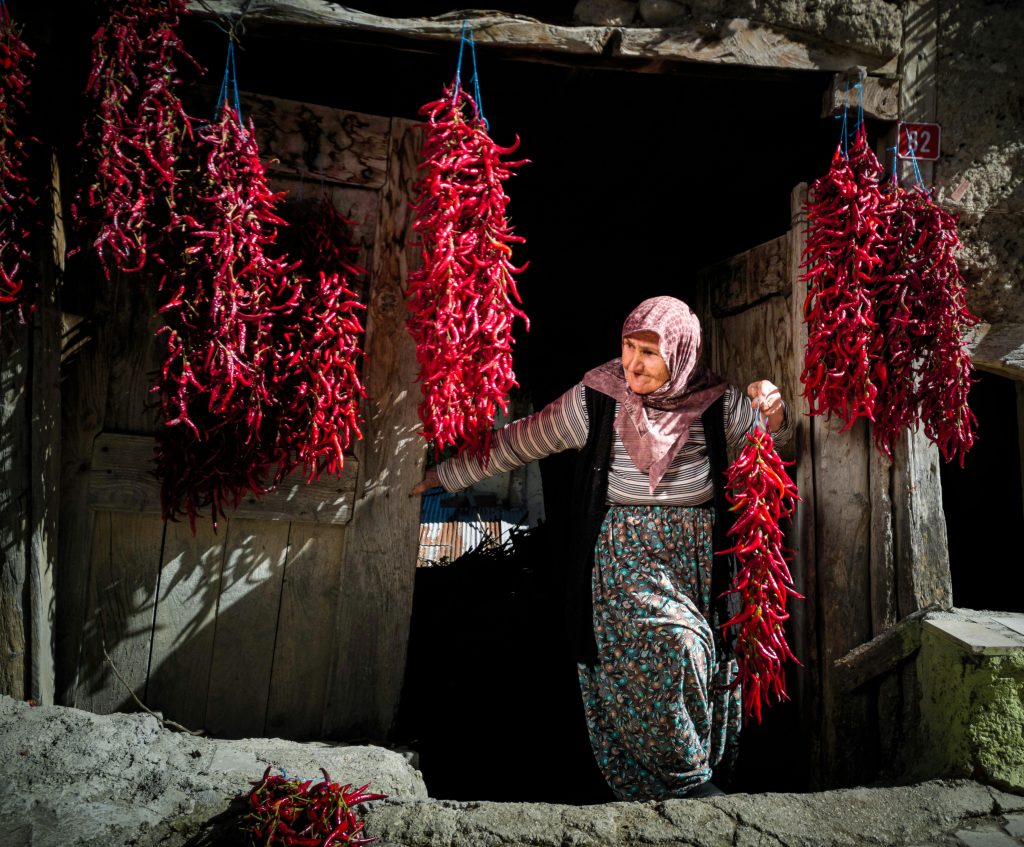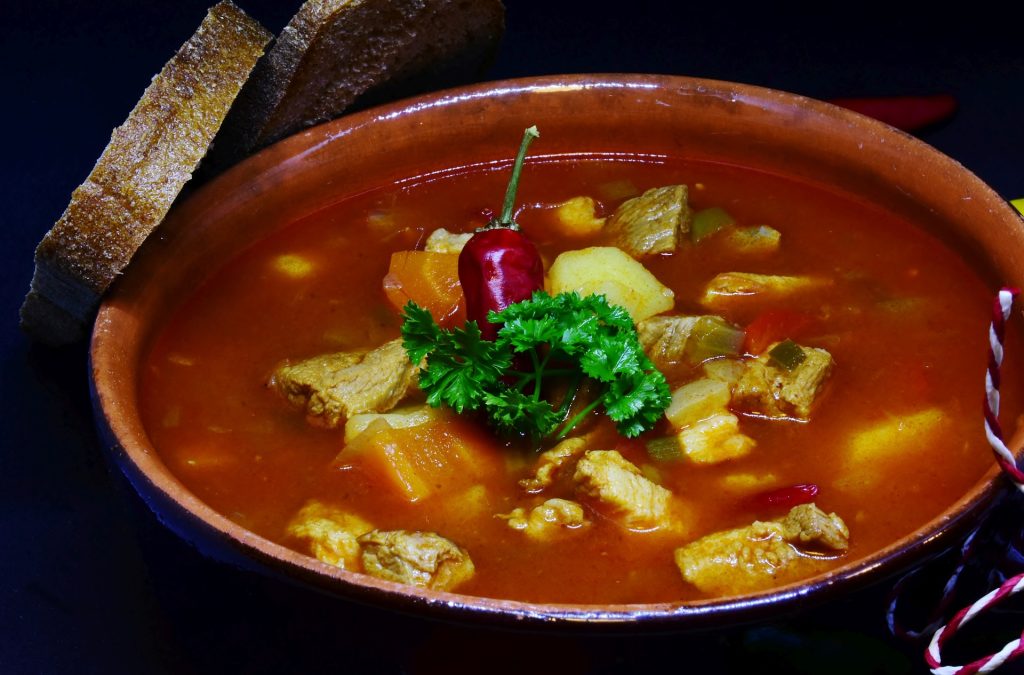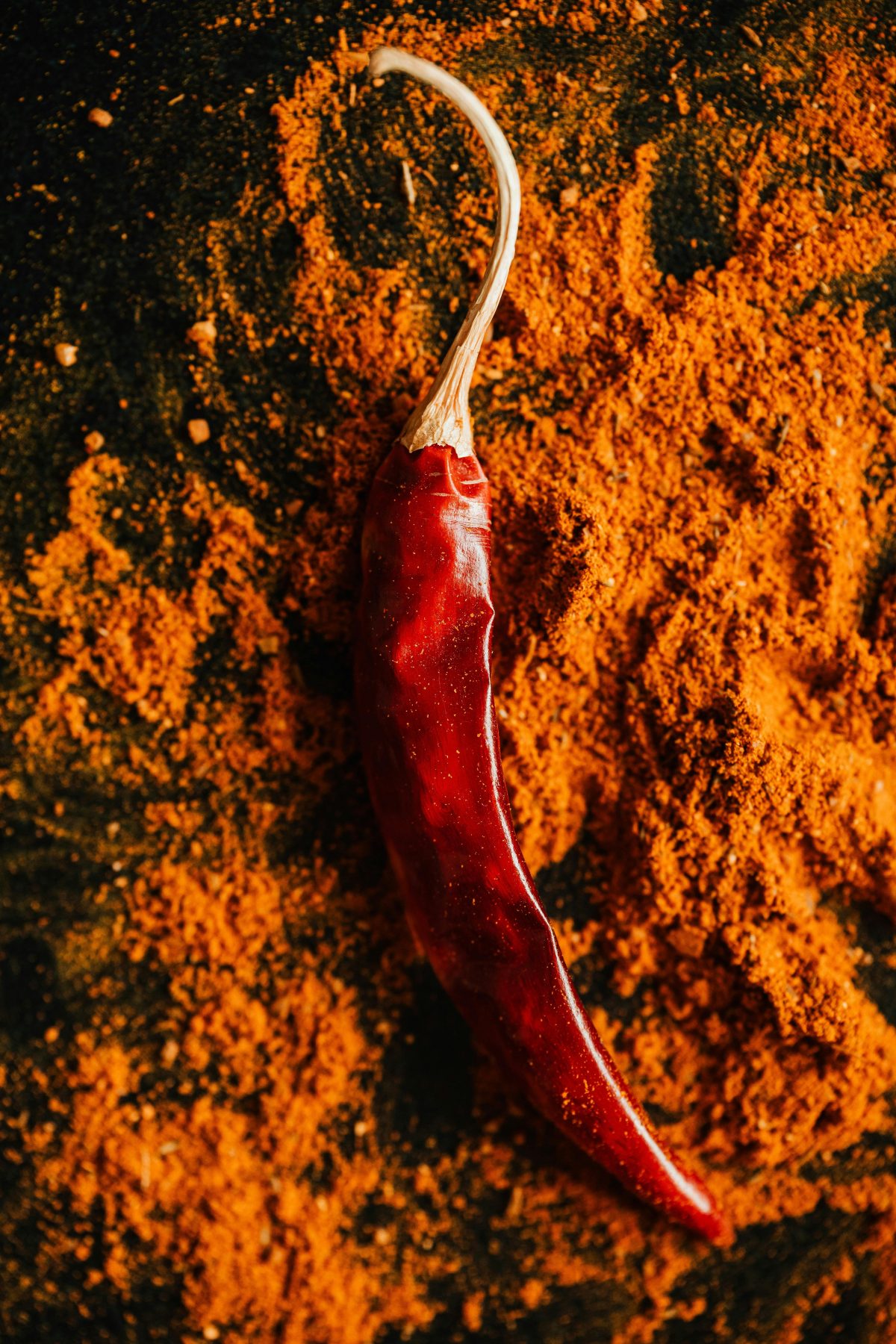In Part one I discussed its history and origin. You will also find the answers to what types of are paprika are there, and how to buy paprika.
Your trip to Budapest can get even more interesting. Transform your Budapest adventure into an unforgettable experience with my exclusive market and food tours. Join me for a private or small group tour of two of Budapest’s most vibrant markets. Discover hidden gems, savor local flavors, and immerse yourself in the city’s rich culture. Let me be your guide to an authentic Budapest experience! I offer private and small group market and food tours. You can read more about here or you can book the experience here.
Production
The southern part of the country where most of the paprika growing happens has around 2000-2100 hours of sunshine per year. Harvest is usually in September before the first frost. They harvest only the red ones and usually on three occasions. After harvest they let it ripen either in crates or hung up. Once it’s ready to process they wash it then dry. In the old days the drying was done by hanging up the peppers under the roof of the porch. Once the peppers are dried enough, they crack them and then grind them. Once the grinding is done, they set the moisture content. Then they rest them. After that they heat treat it to get rid of any microbes before packing.
In the old days most peppers were hot. The way they got rid of the heat is that they cracked the peppers. Then removed the seeds, veins and dried them separately. Once both dried they then mixed them to the desired heat level.

Why is Hungarian paprika so famous?
According to legend, Hungarians were the first to use paprika and only the paprika as a stand alone spice. It is also rumored that Hungarians were the first ones that actually ground the peppers to a fine powder. Creating what we know now as paprika.
An experimental paprika lab was established in Kalocsa and Szeged. Vitéz Horváth Ferenc who at the time was leading the lab in Kalocsa, in 1928 accidentally selected a non spicy plant from a spicy one. He then cultivated it. From this point we have paprika peppers that have no spice. It also meant that the previously tedious process of removing seeds and veins could be skipped. The labs are still working both in Szeged and Kalocsa. They still breed better, higher quality peppers. A few of the most common actual breeds from Szeged that are grown for paprika are: Bíbor, Bolero, Délibáb, Fesztivál, Kárminvörös, Napfény, Rubinvörös, Szegedi F-03, Szegedi 178, Szegedi 80 and Viktória.
It is also rumored that Hungarian farmers were the ones who discovered that paprika dissolves in fat. Once its dissolved it has fantastic flavor and the fat-paprika-onion trinity is a great base for basically any dish.
Albert Szent-Györgyi who received a Nobel prize for discovering vitamin C isolated it from a pepper seed that was grown around Szeged.

Health benefits
Paprika peppers contain more vitamin C than a lemon. That also explains why they looked at it not just as a spice but as a medicine. It was widely used during the 1830s’ cholera outbreak. The heat that we actually sense rather than taste comes from a chemical called capsaicin. It is an effective painkiller. It has anti-inflammatory properties as well. It also preserves well when putting it with some salt and vinegar, or as some old recipes suggest. There is a sort of fermented version of it as well. It calls for taking out the core and salt the inside til it looks like it snowed on it. Then put them in each other then in a jar with a tight fitting lid. It will keep well in the winter months while maintaining its high level of vitamin C. It is also proven that it can help with digestion since capsaicin irritates the stomach’s lining which in return produces more acid.
Uses
Paprika is indispensable in Hungarian cooking, adding flavor, color and aroma to a wide range of dishes. Some of the most famous Hungarian dishes featuring paprika include:
- Gulyás (Goulash): A hearty soup made with meat, vegetables and a generous amount of paprika.
- Pörkölt (Stew): A slow-cooked meat stew seasoned with paprika.
- Paprikás csirke (Chicken Paprikash): Chicken cooked in a creamy paprika sauce.
- Lecsó: A vegetable stew made with peppers, tomatoes, onions and paprika.

Hungarian paprika is a spice that embodies the essence of Hungary’s culinary traditions and cultural heritage. Its rich history, diverse uses and unique flavor profile make it a special ingredient. It’s cherished by chefs and home cooks alike. Whether you’re making a traditional Hungarian dish or experimenting with new recipes, Hungarian paprika is sure to add a touch of authenticity and flavor.
You can read part one here

